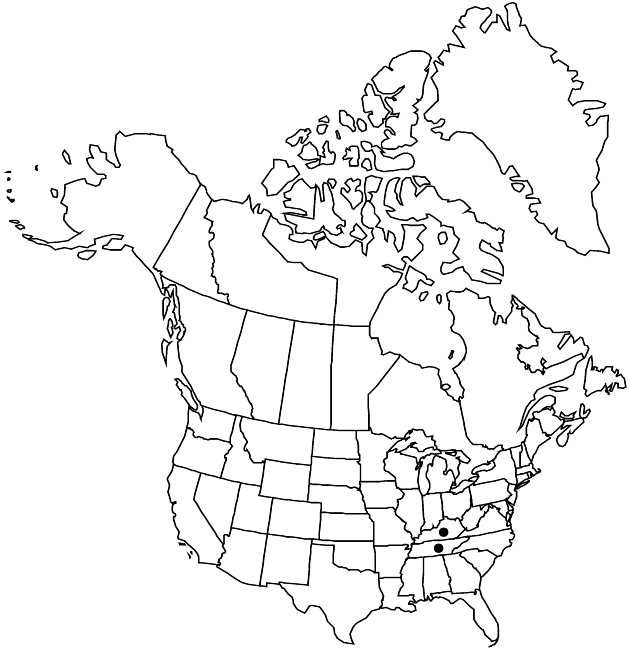Eurybia saxicastelli
Phytologia 77: 261. 1995.
Plants 40–120 cm; in clones; rhizomes elongate, strong. Stems 1, erect, strict (slightly flexuous distally), simple, glabrous, distally ± villosulous (arrays). Leaves cauline; proximal withering by flowering, narrowly winged-petiolate, blades broadly oblanceolate or elliptic to obovate, smaller than mid; mid and distal winged-petiolate (5–30 mm), broadly elliptic to oblanceolate, (70–) 90–140 × 40–50 (–60) mm, reduced distally, bases cuneate, with 4–5 pairs of marked veins, margins coarsely serrate (teeth 1–4 mm), slightly revolute, scabrous, apices acuminate; abaxial faces glabrescent, adaxial sparsely pilose, mainly on veins. Heads 1–10, borne singly or in corymbiform arrays. Peduncles sparsely pilose; bracts 0–1, foliaceous, remotely serrulate. Involucres campanulate, 7–11 mm, shorter than pappi. Phyllaries 32–36 in 4–5 series, broadly oblong, strongly unequal, scarious, dark green zones wide, from 1/2 distally, margins hyaline, narrow, erose, densely ciliate, apices appressed or often slightly squarrose, obtuse to subacute, faces glabrous, eglandular. Ray-florets 10–30; corollas pale white to pale blue, 10–15 × 1.5–2 mm. Disc-florets 10–20; corollas yellow turning pinkish, ca. 4.5–5 mm, tubes longer than funnelform throats, lobes spreading, triangular, ca. 1.5 mm. Cypselae tan, fusiform, cylindric, 5–6 mm, ribs 7–11, stramineous, faces ± strigose; pappi of pale stramineous (clavate) bristles 5–7 mm, shorter than to ± equaling disc corollas. 2n = 54.
Phenology: Flowering late summer–fall.
Habitat: Back edge of spring-flooded, summer-dry, sandstone boulder–cobble river bars with shrubby vegetation
Elevation: (600–)1000–1500 m
Discussion
Of conservation concern.
Eurybia saxicastelli is known only from the Rockcastle River of Kentucky (J. J. N. Campbell and M. E. Medley 1989) and Tennessee.
Selected References
None.
Lower Taxa
"[" is not declared as a valid unit of measurement for this property."]" is not declared as a valid unit of measurement for this property.
